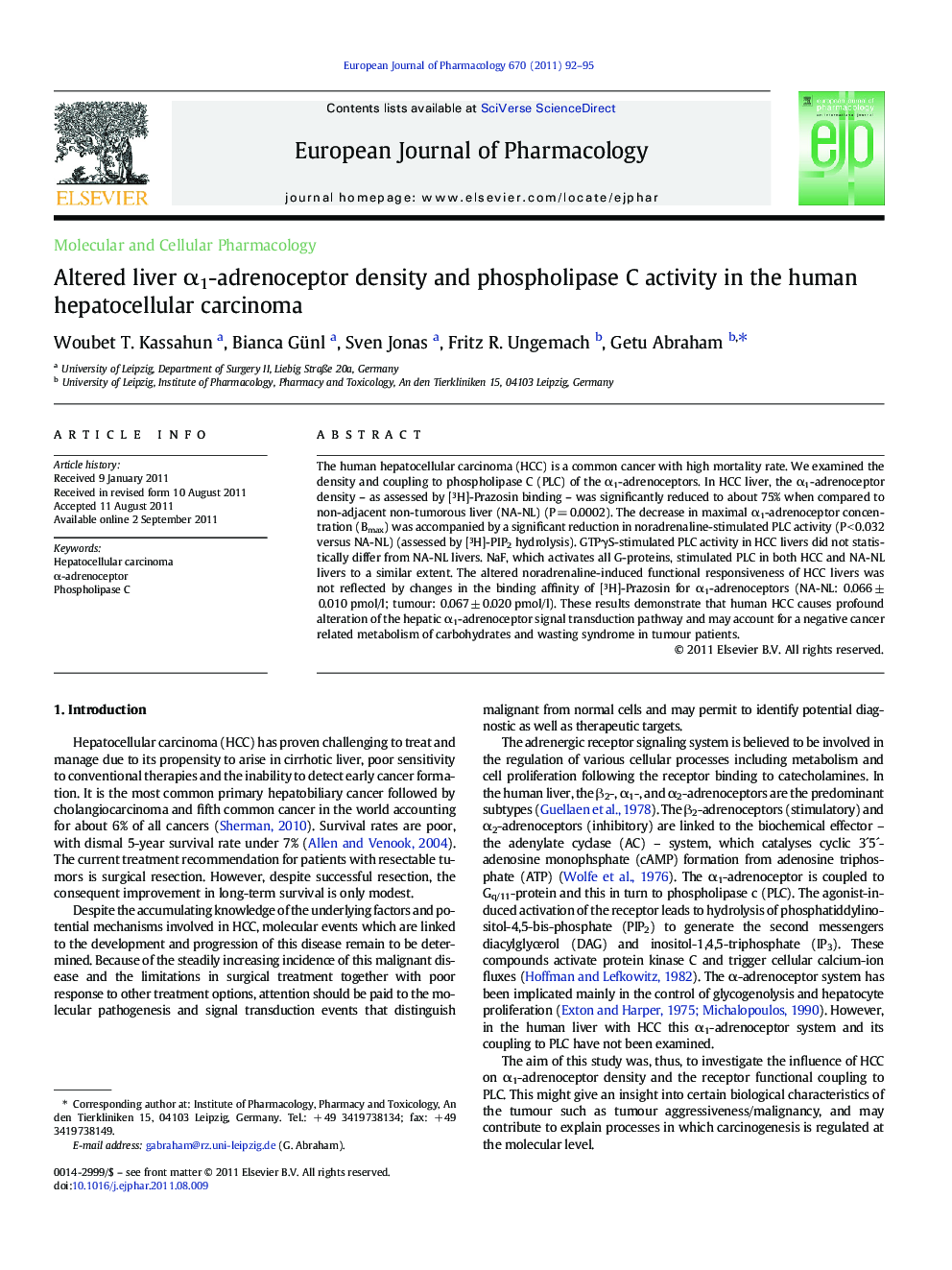| Article ID | Journal | Published Year | Pages | File Type |
|---|---|---|---|---|
| 5830200 | European Journal of Pharmacology | 2011 | 4 Pages |
Abstract
The human hepatocellular carcinoma (HCC) is a common cancer with high mortality rate. We examined the density and coupling to phospholipase C (PLC) of the α1-adrenoceptors. In HCC liver, the α1-adrenoceptor density - as assessed by [³H]-Prazosin binding - was significantly reduced to about 75% when compared to non-adjacent non-tumorous liver (NA-NL) (P = 0.0002). The decrease in maximal α1-adrenoceptor concentration (Bmax) was accompanied by a significant reduction in noradrenaline-stimulated PLC activity (P < 0.032 versus NA-NL) (assessed by [³H]-PIP2 hydrolysis). GTPγS-stimulated PLC activity in HCC livers did not statistically differ from NA-NL livers. NaF, which activates all G-proteins, stimulated PLC in both HCC and NA-NL livers to a similar extent. The altered noradrenaline-induced functional responsiveness of HCC livers was not reflected by changes in the binding affinity of [³H]-Prazosin for α1-adrenoceptors (NA-NL: 0.066 ± 0.010 pmol/l; tumour: 0.067 ± 0.020 pmol/l). These results demonstrate that human HCC causes profound alteration of the hepatic α1-adrenoceptor signal transduction pathway and may account for a negative cancer related metabolism of carbohydrates and wasting syndrome in tumour patients.
Related Topics
Life Sciences
Neuroscience
Cellular and Molecular Neuroscience
Authors
Woubet T. Kassahun, Bianca Günl, Sven Jonas, Fritz R. Ungemach, Getu Abraham,
